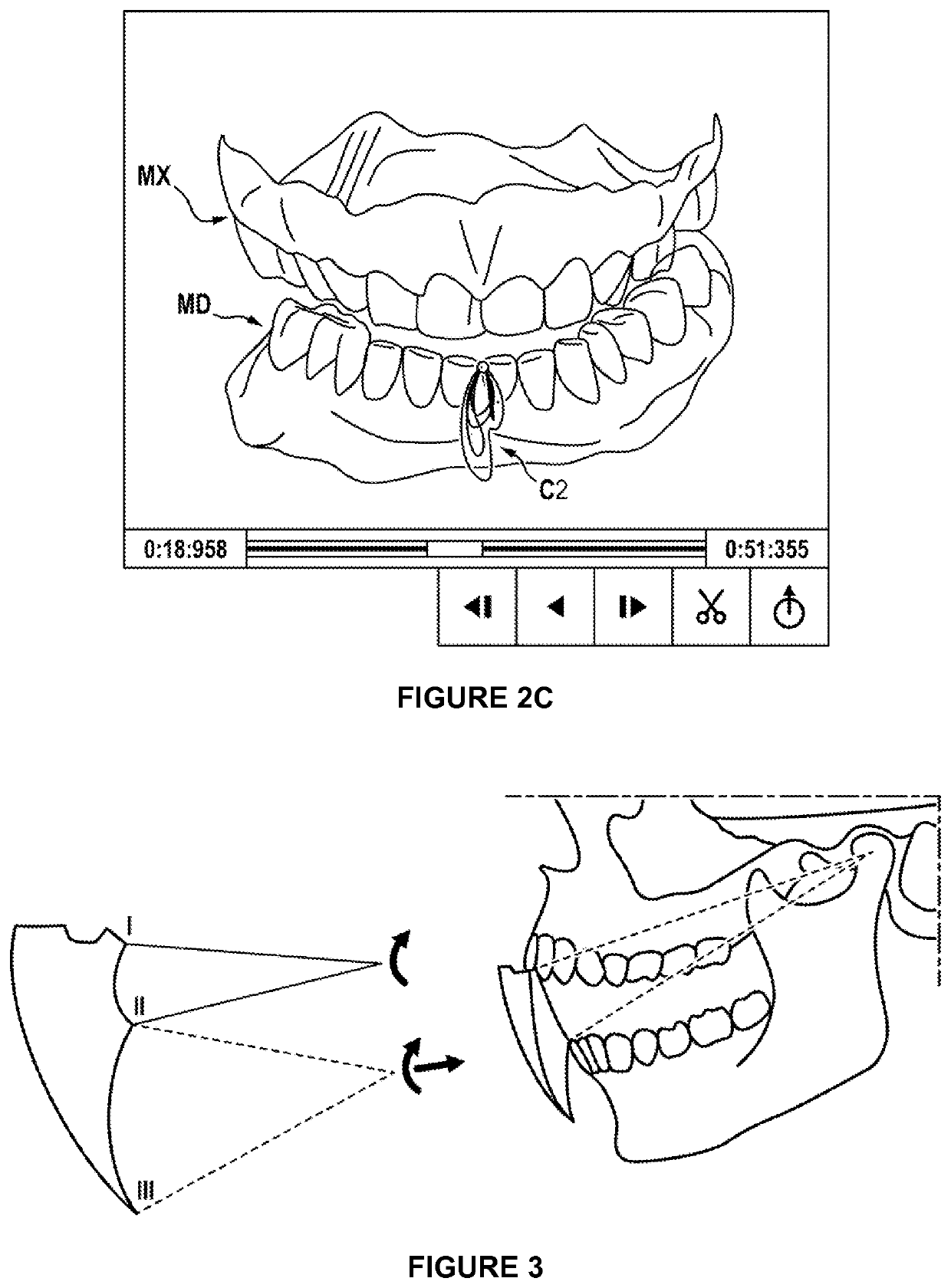Method for animating models of the mandibular and maxillary arches of a patient in a corrected intermaxillary relationship
a technology of intermaxillary relationship and model, applied in the field of dentistry, can solve problems such as inaccurate simulation of articulators
- Summary
- Abstract
- Description
- Claims
- Application Information
AI Technical Summary
Benefits of technology
Problems solved by technology
Method used
Image
Examples
Embodiment Construction
[0035]The method described below is computer-implemented.
[0036]The system for implementing the method comprises:[0037]a computer comprising a processor for receiving data previously obtained, especially digital models of the patient's mandibular and maxillary arches and a record of the patient's mandibular kinematics, and for running animation and modelling algorithms, and[0038]a screen for displaying the various steps implemented during the method, with a user interface allowing the practitioner to input treatment parameters and to view the mandibular kinematics before and after correction.
Obtaining Three-Dimensional Digital Models of the Mandibular and Maxillary Arches
[0039]Prior to the implementation of the method, the dental arches were scanned in a known and reproducible meshing relationship. A tool that can be used for this purpose is an intraoral optical impression camera. Such a camera is used to scan one arch and then the other, as well as a vestibular (sideways) impression...
PUM
 Login to View More
Login to View More Abstract
Description
Claims
Application Information
 Login to View More
Login to View More - R&D
- Intellectual Property
- Life Sciences
- Materials
- Tech Scout
- Unparalleled Data Quality
- Higher Quality Content
- 60% Fewer Hallucinations
Browse by: Latest US Patents, China's latest patents, Technical Efficacy Thesaurus, Application Domain, Technology Topic, Popular Technical Reports.
© 2025 PatSnap. All rights reserved.Legal|Privacy policy|Modern Slavery Act Transparency Statement|Sitemap|About US| Contact US: help@patsnap.com



